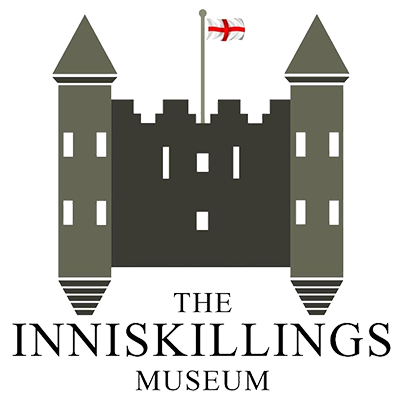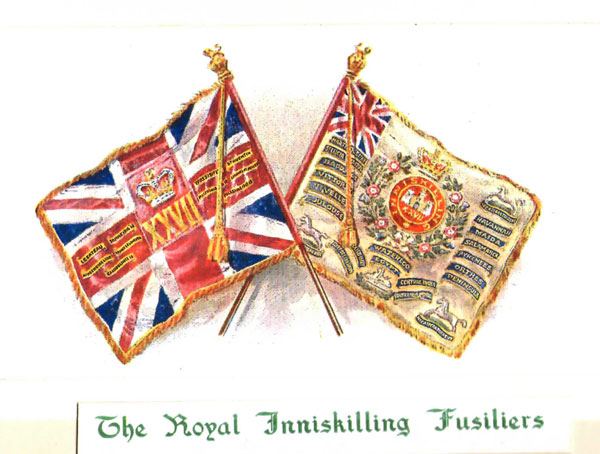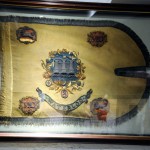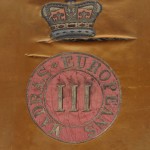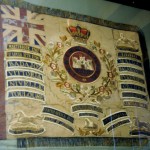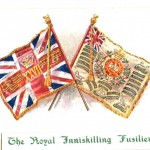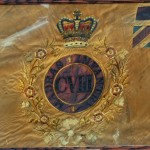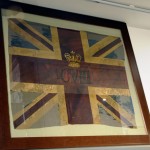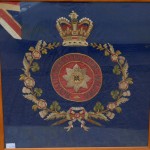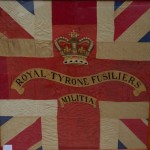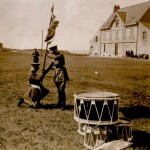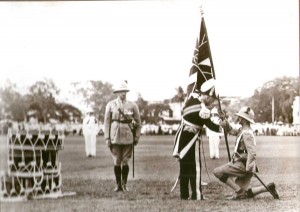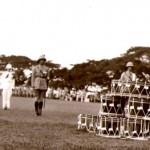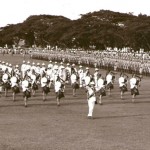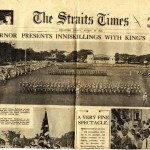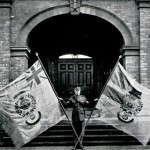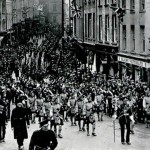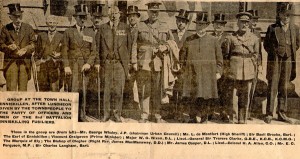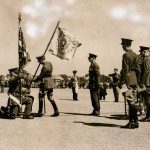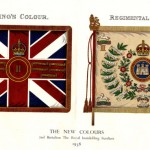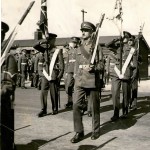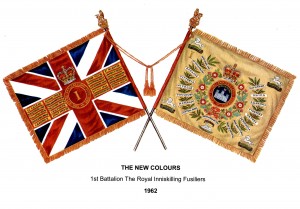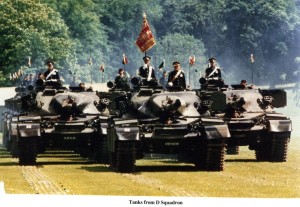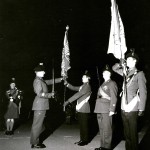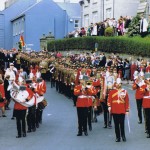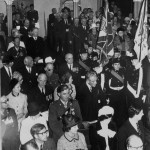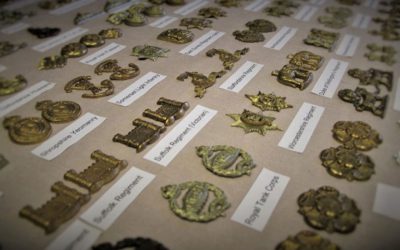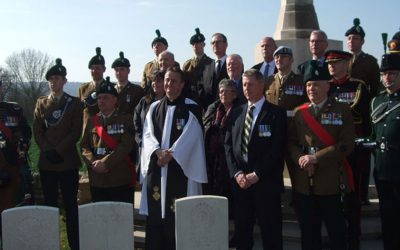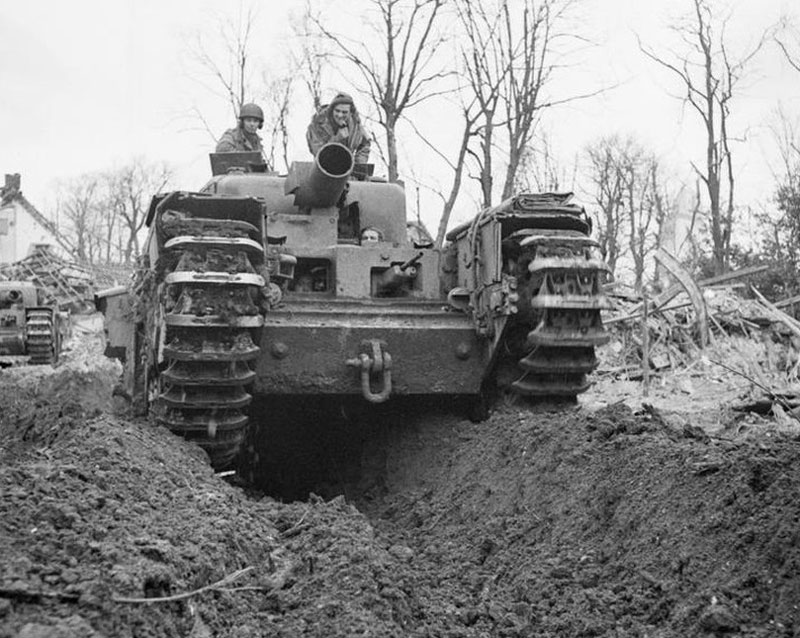The term ‘Colours’ covers Cavalry Standards and Guidons as well as Infantry Colours.
- 1751 – 27th-Colours
- 1837 – Notes for presentation of new Colours – Cape Town, on St Lucia day
- 1840 – Guidon of 6th Inniskilling Dragoons
A regiment’s Colours are a development of the banners of medieval nobility and had the practical purpose of providing a conspicuous rallying point in battle.
- 1850 – Colour of 3rd Madras Europeans – forerunner of 108th
- 1869 – First battalion Inniskilling Fusiliers Regimental Colour with Boer War honours added
- 1869 – Fusiliers’Colour – with First World War Honours added to the King’s Colour
Colours, through their embroidered names of battles and campaigns, are the memorials to the great deeds of a regiment and are the symbol of its spirit as expressed in these deeds.
- 1870 – Regimental Colour of 108th-Regiment
- 1870 – Queens Colour of 108th Regiment, forerunner of 2nd battalion Royal Inniskilling Fusiliers
- 1870 – Regimental Colour of Royal Tyrone Militia Regiment
During battle, acts of great bravery were often carried out in the defence of the Colours. They were the rallying point of a regiment and the scene of its last stand. The loss of Colours to the enemy was felt as a significant dishonour.
- 1870 – Queen’s Colour of Royal Tyrone Militia Regiment
- 1919 – Boulogne, new King’s Colour is presented
- 1919 – 1st and 2nd Bn Colours in France
The first King’s Regulations relating to Colours were in 1747. Each regiment of Foot was required to carry two colours. One of these was to be the King’s, or First, Colour; the other was to be called simply the Second Colour. This later took the name Regimental Colour.
- 1938 – Blessing the new Colour, 1st Bn, Singapore
- 1938 – 1st Bn Trooping the Colour – Singapore
- 1938 -Straits Times, Singapore
- 1939 – The 70 year old Colours of 1st Bn
- 1939 – 2nd Bn parade the 70 year old Colours of 1st Bn to the Cathedral, Enniskillen for laying up
- 1939 – Old Colours of the 1st Bn being received by the Bishop at St Macartin’s Cathedral, Enniskillen
The difference was that the King’s Colour consisted of the Union flag throughout, while the Second Colour was to be in the colour of the regimental facings, with a small union flag in top (hoist) left corner. Displayed in the centre of this colour was the regimental number. If a regiment had been granted a special badge, as had the 27th Inniskillings, this was also to be displayed.
- June 1939 – New Colours are presented to reformed 2nd Battalion by the Duke of Gloucester at Catterick
- New Colours of the 2nd Batallion
- 1939 – 2nd Battalion parading their new Colours
Over the years, modifications were made, for example, the Union flag was no longer displayed on the Regimental Colour.
Colours in battle. Colours were carried by a junior officer, Ensign or Lieutenant, who was protected by a Colour Sergeant. Being conspicuous points on a battlefield these officers often suffered high casualties. As the range and accuracy of small arms increased so did the casualties. The last time Colours were carried into battle was at the British defeat at the hands of the Boers in South Africa in 1881.
Battle Honours. These were restricted to regiments that had seen hard service and were sometimes not granted if sufficient evidence could not be presented – which dented regimental self esteem. In one instance it took 200 years for a particular regiment to be awarded certain battle honours. Generally quite a number of years elapsed before a particular honour was granted. Of course defeats were not honoured.
- last parade of the Inniskilling Fusiliers Colours before amalgamation. 30th June 1968, Norton Bks, Worcester, England
- 1992 Dragoons’ last parade Enniskillen
- 1975 Laying up of the Colours of the 5th Bn (TA) Royal Inniskilling Fusiliers
Consecration and Laying up. It was not till 1843 that instructions were issued that no colours were to be taken into use without a formal presentation and religious service. A detailed form of service was first issued in 1899 for the infantry and 1928 for the cavalry.
In the last third of the nineteenth century the custom of depositing old colours in a garrison or parish church became common. This was largely due to the development of county names for regiments.
Before that, the old colours were the property of the colonel. Some kept them in the possession of the family, others disposed of them immediately. Some were cut up and distributed as souvenirs among officers; others burnt and the ashes preserved; others buried with full military honours. One colonel’s dying wish, carried out, was to be buried in the colours.
A moth-eaten rag on a worm-eaten pole,
It does not look likely to stir a man’s Soul,
‘Tis the deeds that were done ‘neath the moth-eaten rag,
When the pole was a staff, and the rag was a flag.
